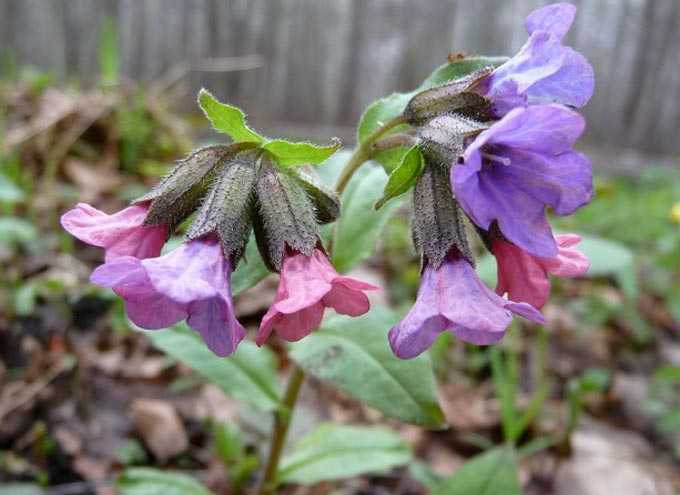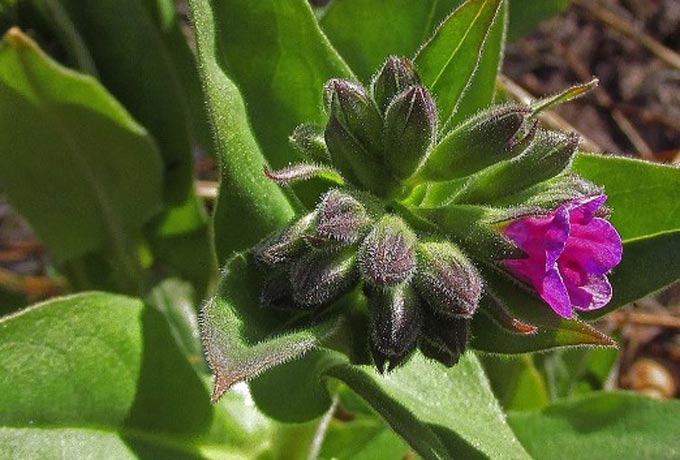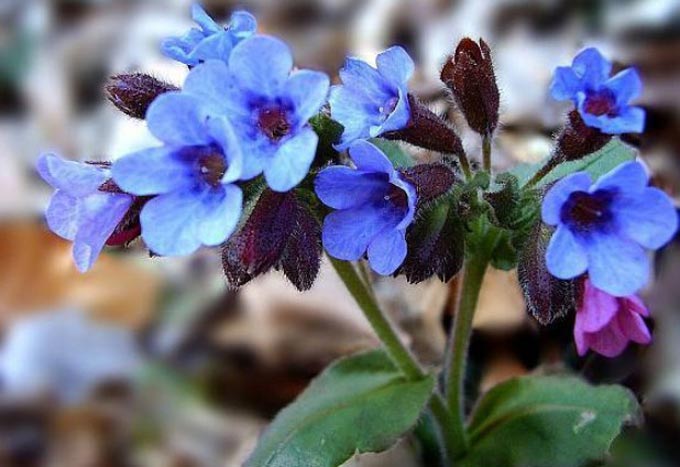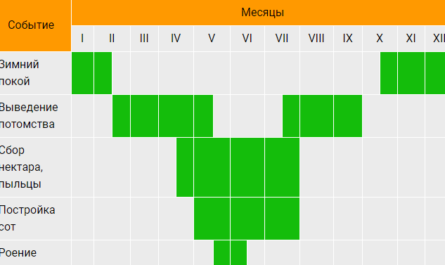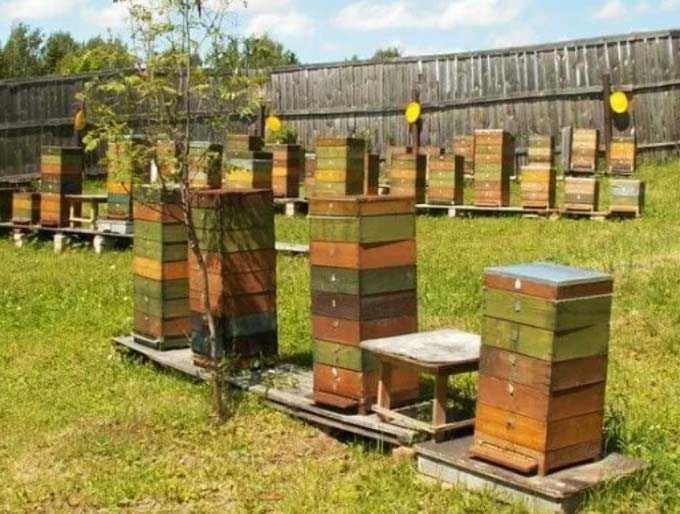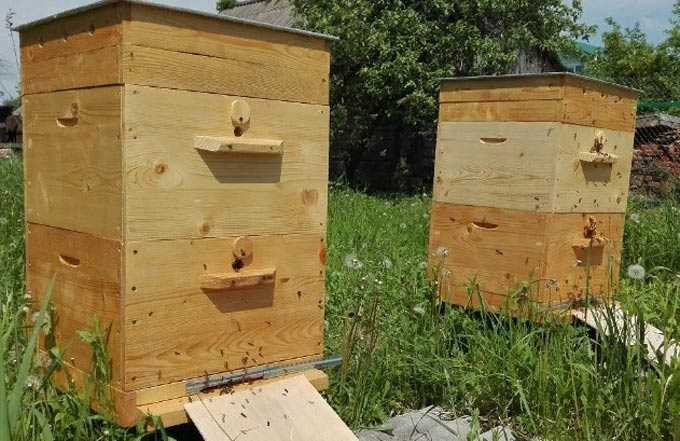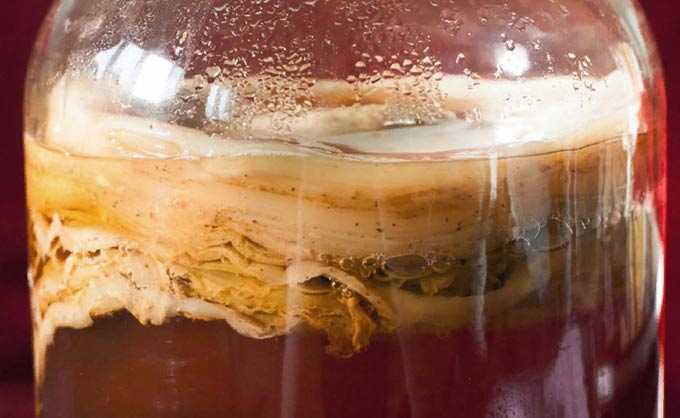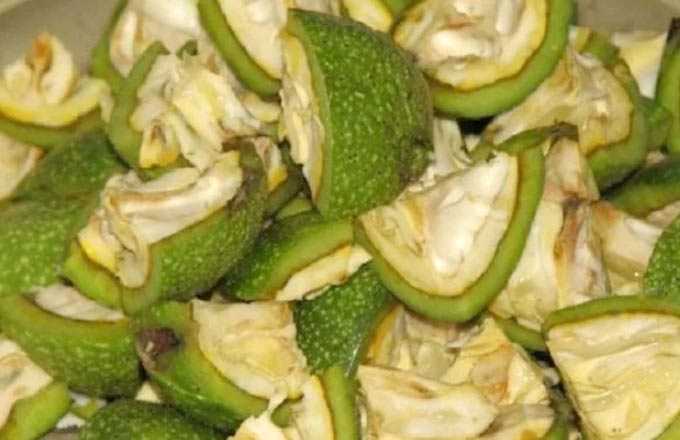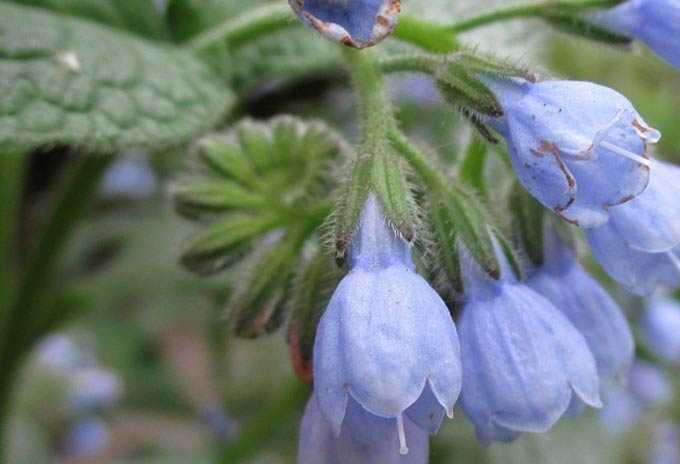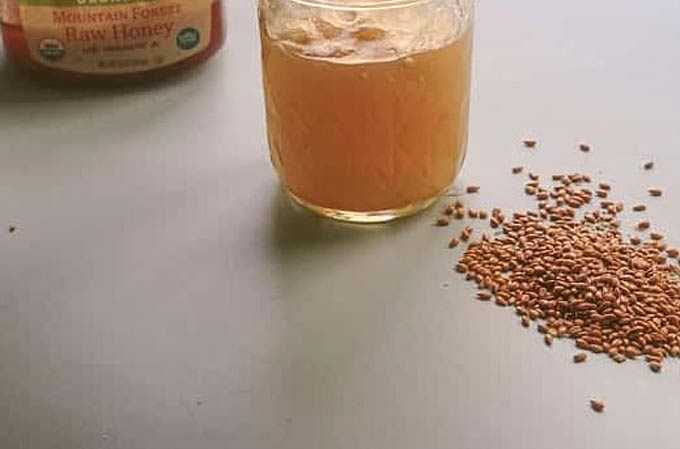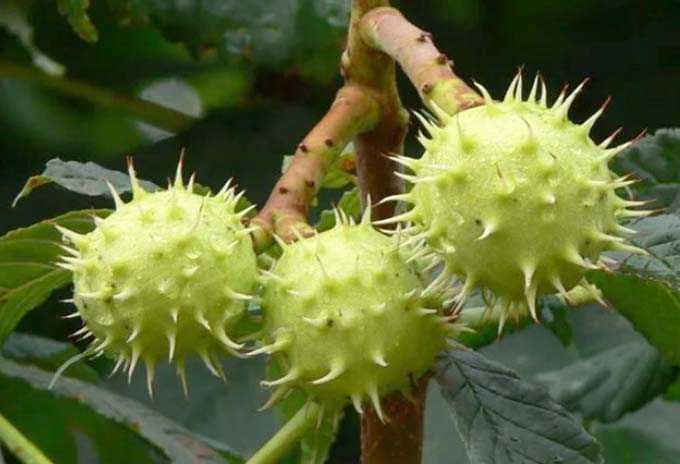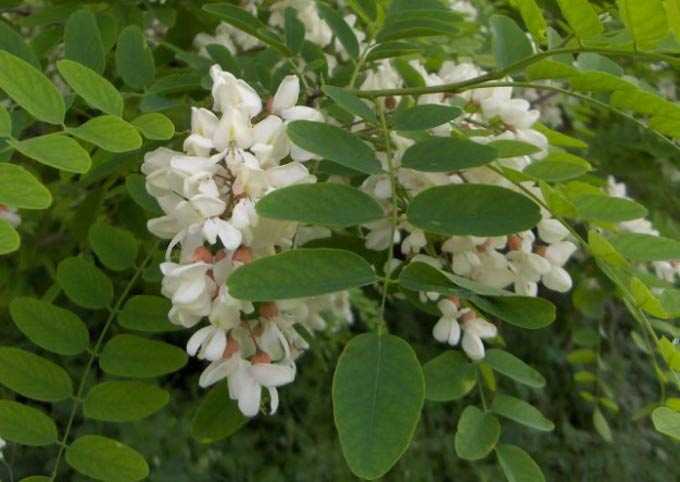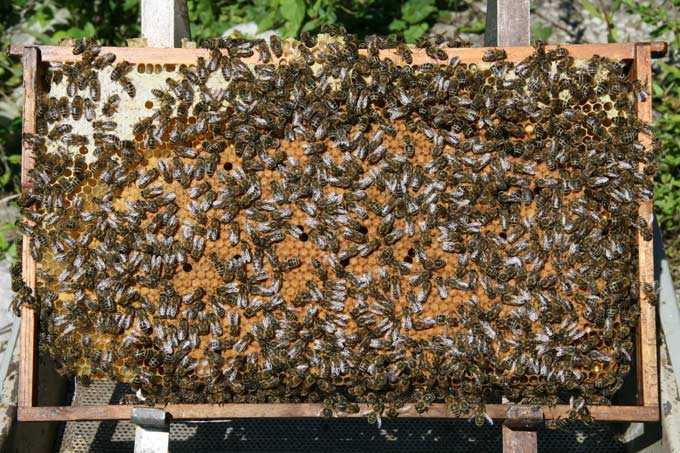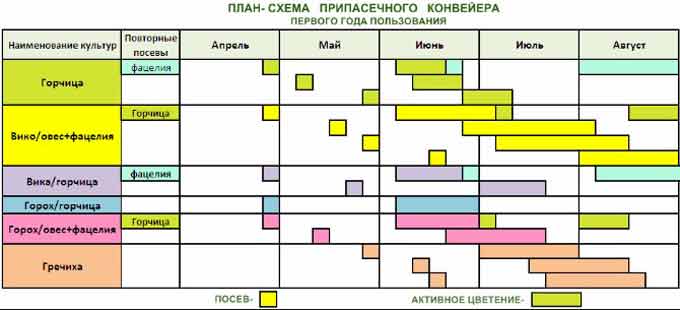Lungwort melliferous plant, which is a perennial wild medicinal herb from the borage family. Valuable early spring source of pollen and nectar for apiaries. The lungwort blooms profusely each year, providing the first seasonal sustaining bribe.
The content of the article
- 1 Distribution and Description
- 1.1 Varieties
- 2 Significance for agriculture
- 3 Agrotechnics
- 4 Honey productivity
Distribution and Description
Most often, this grass is found at the sides of forest roads, in groves, deciduous forests, on forest edges and clearings, in places of felling, among shrub thickets. Sandy, carbonate, chernozem soil rocks are the most favorable for its rapid development.
The stem of the plant is low (up to 30 cm), erect, slightly ribbed. All twigs and leaves are covered with fine, thornless hairs. The basal leaves are heart-shaped, pointed at the tips, with long petioles, of a dark green hue. Stem leaves are arranged alternately. They are lanceolate, almost sessile in structure. Flowers with a double perianth are collected in a scutellum at the very top of the stem.
At the beginning of the flowering period, the pink corolla of the inflorescence opens, later it changes color to purple. The plant is pollinated exclusively by insects. The special structure of the flower (a long corolla tube) prevents ineffective pollinators from extracting nectar from it.
Varieties
In total, there are about 16 varieties of this perennial in the world. They all have a similar appearance. They are distinguished exclusively by the territory of growth, height and honey productivity.
Dark lungwort (unclear) occurs in the Trans-Urals, Europe, Crimea – in the forest and forest-steppe zone. Blooms from 20 to 30 days. It is the best nectar plant of its kind.
Soft lungwort grows wild in Siberia, Transcaucasia, Europe, the Urals. It differs from the obscure lungwort in height (the stem can reach 45 centimeters) and in large large basal leaves – from 30 to 60 centimeters in length. It blooms for 25 to 30 days.
On the territory of Europe, it is often found narrow-leaved medunitsa… The leaves of the plant are linear, narrow and long. It blooms for about 3 weeks.
Medicinal lungwort most common in Western Ukraine, Kaliningrad, Europe, Britain. The leaves of the grass are wide, large (15 centimeters in length), light green with light spots. The flowering period lasts up to 3-4 weeks.
Significance for agriculture
This perennial is not grown as an agricultural crop.
Lungwort is used in folk medicine as a medicinal plant. Also, all varieties of melliferous plants are cultivated as decorative perennials. They are grown in gardens, planted to form urban landscapes.
Agrotechnics
Dikoros is unpretentious to climatic conditions and agricultural technology.
Propagated by seeds and vegetatively. Seeds are sown in July in prepared soil. Seedlings appear in the same year. Self-care is not required. The grass begins to bloom in the second or third year of life.
For rapid development, lungwort is bred vegetatively – by dividing the root system of perennial bushes. After flowering, the plant is dug up and the root is divided into several parts. When transplanting, abundant watering is recommended. The plant will bloom in the first year after planting.
Honey productivity
The honey plant blooms in early spring – from April to May. In some regions, it is the first flowering spring plant. The inflorescences produce abundant nectar and pollen throughout the day during the entire flowering period.
The honey productivity of the dark variety is 100 kilograms per hectare of plantations.
Soft – up to 70 kilograms of nectar.
Medicinal bees can harvest from 60 to 70 kilograms per hectare.
Honey varieties collected exclusively from lungwort do not exist on the market. Since the perennial blooms early, all the nectar collected by the bees is used for feeding and the development of bee colonies after wintering. It is not pumped out of the honeycomb for sale.
